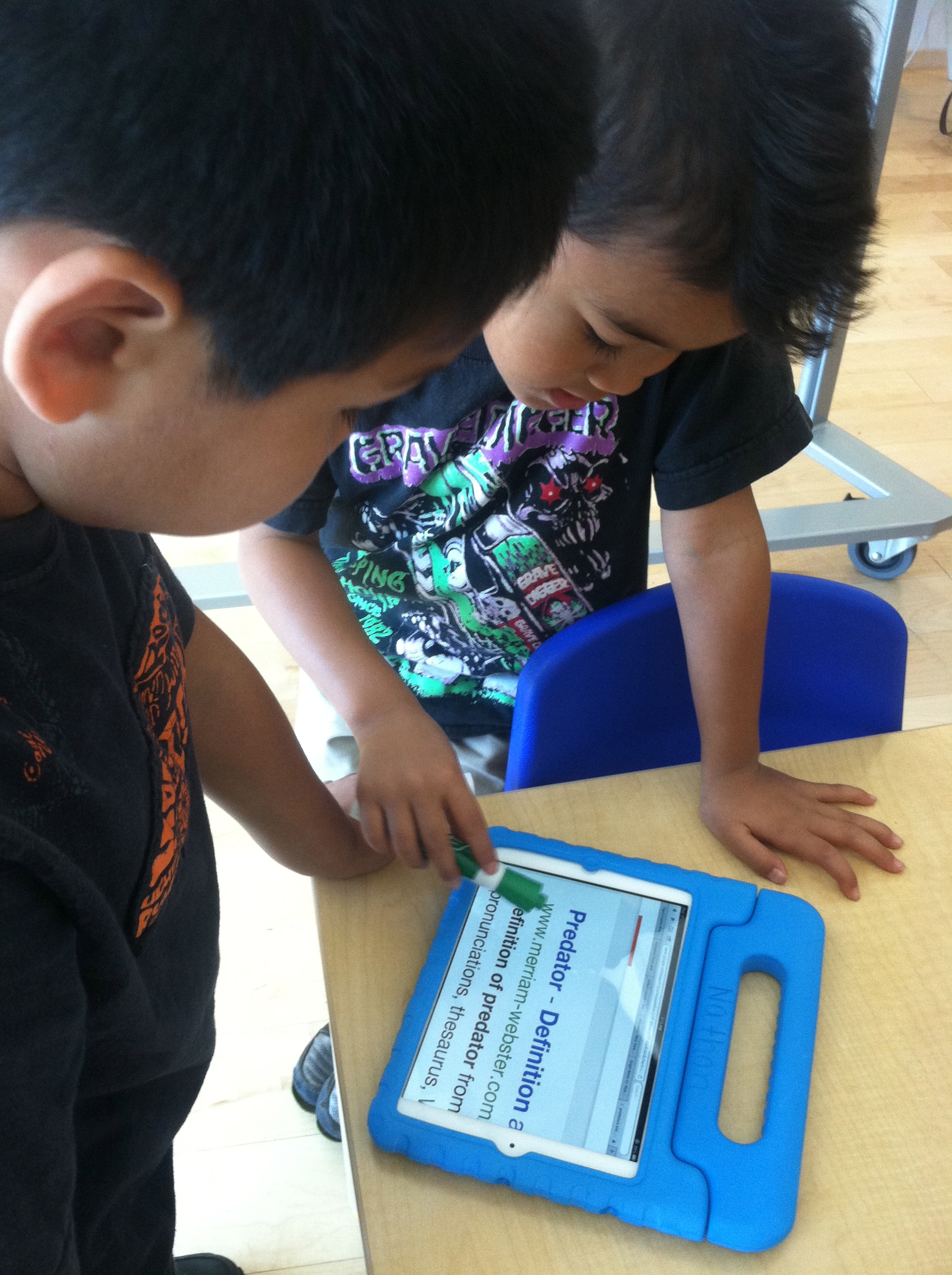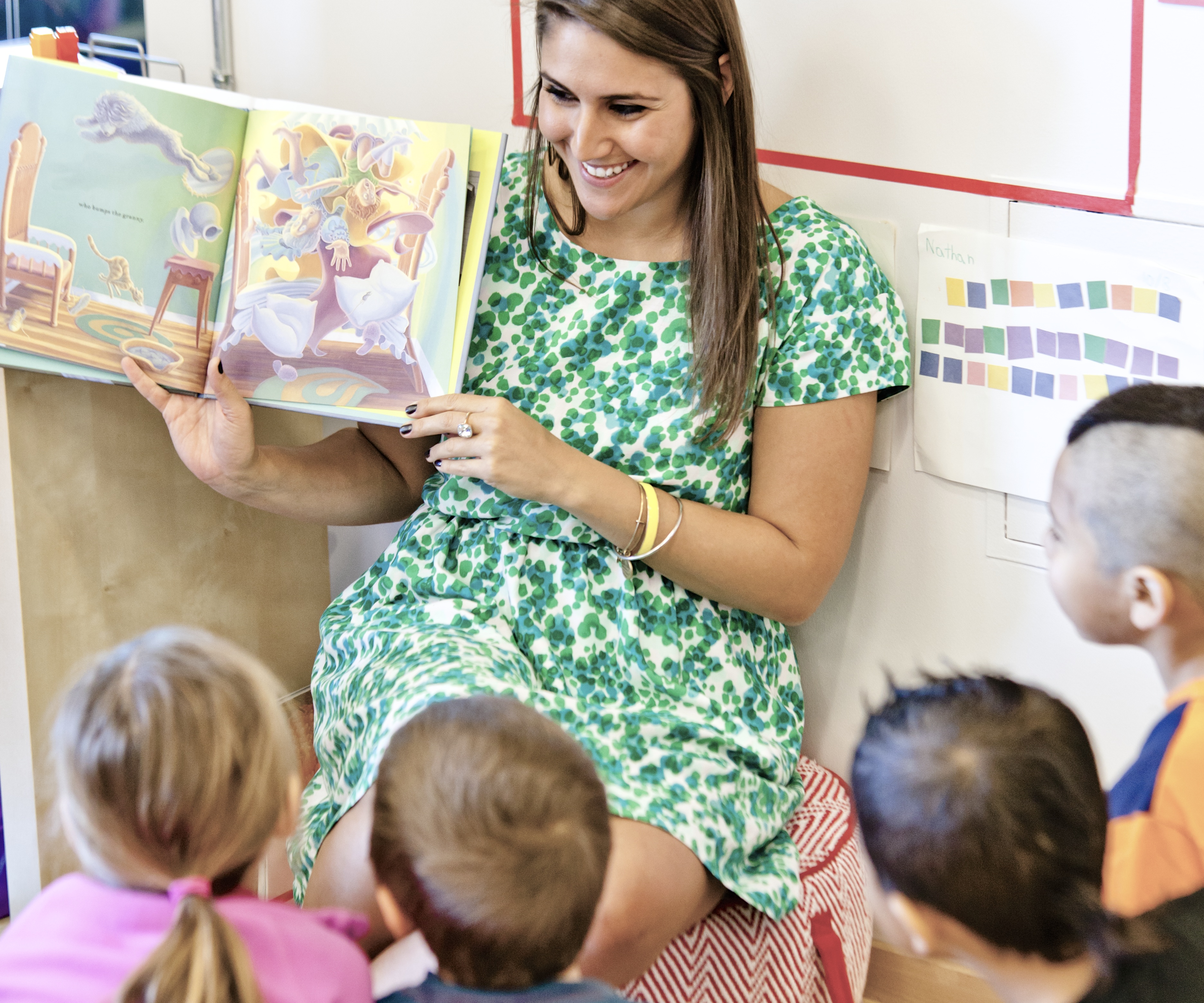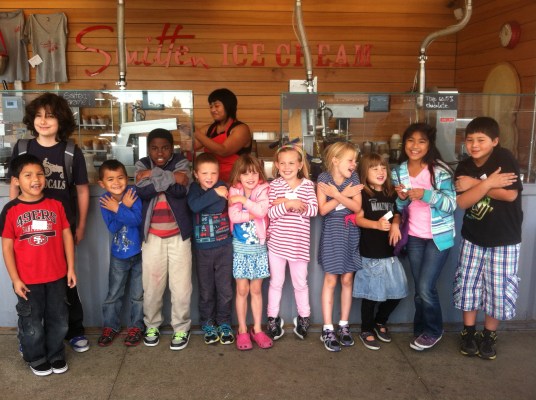Alice, a single mom living in Daly City, was facing major roadblocks with her public school system. Her five-year-old son was advanced enough to enter first grade instead of kindergarten. And her older son, who was about to enter third grade and had been diagnosed with attention deficit hyperactivity disorder, hated school.
She knew there was a better educational alternative but couldn’t afford to send her kids to private school. She happened to be searching online and saw an ad on Facebook for AltSchool, a small one-room school, located in the Dogpatch neighborhood of San Francisco, that focused on child-centric education. The school was exactly what her children needed: learning based on the specific child’s needs and challenges rather than a rigid curriculum based on standardized test results.
AltSchool, while private, also offered a generous financial aid package, and she enrolled her kids right away. AltSchool is the brainchild of Aardvark founder and longtime Google executive Max Ventilla. Ventilla, whose social search company was sold to Google in 2011, previously worked on the Google+ team, and was one of the search giant’s early proponents of social search and personalization. He sold another tech startup in enterprise software before his long tenure at Google (he worked at Google before Aardvark, as well). Earlier this year, he started thinking about his next startup and what area he’d like to focus on.
Education was at the top of his mind, as he has a two-year-old daughter about to enter pre-school, and a son on the way. And he saw education as an area where he could have a huge impact.
“One of top five industries in the U.S. by expenditure is elementary education, and as opposed to other large industries, the median experience is bad from every angle,” he explains. The dysfunction and relative slow-to-change nature of the educational system is one of his biggest frustrations. The cost of education is increasing, he adds, but that isn’t translating into children excelling more effectively at skills like reading and math.
“If a time traveler came back from the early 1900’s, and looked at schools, they would look relatively the same. And there’s something wrong with that, because children and our world have changed.”
He started researching where success was actually taking place at a broader scale in schools, in early education. What ties these schools together is the notion of child centeredness, he says, which is providing individualized education where the student learns at his or her own pace in ways most nurture them and their education.
If a time traveler came back from the early 1900s and looked at schools, they would look relatively the same.
With this in mind, Ventilla decided that he wanted to build a school that approaches education and learning through a lens of things the children are most passionate about. “I believe the right way to teach a person is not as a subject but through an immersion,” he continues. An example of this is if you are teaching children about aquatic life, you can incorporate the subject to teach chemistry, ecology, economics, politics and even culture.
The more he imagined what his vision would look like in reality, the more it sounded like a home school environment but with a larger group, skilled teachers, and a curriculum that focused on exposing children to experiences, as well as skill-building.
Armed with this goal, Ventilla left Google in April and raised $3 million from First Round Capital, Harrison Metal, Baseline and a few other investors who had backed him during the Aardvark days. He hired teachers, operators who worked with him at Aardvark, and brought on Richard Ludlow, the founder of Academic Earth, as his COO. Ludlow’s online education video site, which was called a “Hulu for Education” and was a Bill Gates favorite, was eventually acquired last year by Ampush Media.
 Ventilla found space in Dogpatch for his micro-school, hired a bunch of former Google engineers and set upon redesigning the entire school experience in the spring and summer of this year. One of the first distinctive characteristics of Ventilla’s AltSchool is that there is no such thing as a child “at grade level.”
Ventilla found space in Dogpatch for his micro-school, hired a bunch of former Google engineers and set upon redesigning the entire school experience in the spring and summer of this year. One of the first distinctive characteristics of Ventilla’s AltSchool is that there is no such thing as a child “at grade level.”
As he explains, most students vary in skill level in subjects like math, reading, science, art, physical education and social studies, and “grades” are confining. Like Alice’s children, most children learn at different levels, so they need specialized attention.
In this inaugural class, there are around 20 students between the ages of five and 10. They are split into two main learning groups, with the 5-7 year olds, and the 8-10 year old populating each group. There are generally eight students to one teacher but for some activities the entire group learns together. The actual building has one large room that is sectioned off into areas for play and learning.
AltSchool teachers create highly personalized curriculum each week, called Playlists, which are a set of 10 or so goals and projects that the student has to complete for the week. Each child is given an iPad mini, where they can access their playlists through project management software Trello. Each weekend, AltSchool teachers plan their playlists for each of their students based on what that student’s personalized curriculum and goals are for the week. Projects could range from making a list of what you are thankful for for Thanksgiving to reading a book.
Another area where Ventilla is hoping to disrupt traditional education is video. The classroom is outfitted with a number of video cameras so that teachers can just press a button to document a moment. Ventilla says that teachers, parents and students who have been able to actually watch a breakthrough moment or a moment of breakdown have been able to help their children learn better. “You can see what works for specific children, and what doesn’t work,” he tells me. The technology is pretty impressive. AltSchool has built audio hardware to better record in noisy settings, and video is uploaded to an online CMS that both parents and teachers can access.
Unsurprisingly technology is the central foundation of education and planning at the AltSchool. Ventilla has brought on a team of technologists, designers and engineers who are developing tools and formatting existing ones to support teachers, parents, and students. He envisions this base of talent as building an R&D shop for what works in his micro-schools.

In addition, AltSchool students are using LearnZillion on their iPad minis to learn math skills, as well as an internal SMS where parents and teachers can access children’s work, progress, videos and more. Plus, parents and teachers can collaborate through this dashboard on students’ weekly playlists.
In fact, Ventilla is hoping to build some proprietary software of his own to use within the school. His vision is to have a hundred engineers and designers working on developing better technology products for in-class learning.
AltSchool also embraces a “school without walls” approach. Classes regularly venture outside the classroom to take advantage of the amazing cultural experiences available in San Francisco, often leveraging Uber SUVs for easy quick trips.
Recent field trips include Smitten Ice Cream, which inspired a study of the applied physics of their innovative quick freeze process using liquid nitrogen; Mission Science Workshop, to engage in hands-on chemistry lessons; Walt Disney Family Museum, to study animated filmmaking; San Francisco Maritime Museum, as children explored life before modern transportation and communication; and Good Eggs (founded by Aardvark co-founder Rob Spiro) to learn about sustainable farming, healthy eating and environmental awareness.
Looking to the future, Ventilla is building out a network of micro-schools, which will be modernized versions of the “one room schoolhouse” housing 60-100 students each. Continuing the theme of customization, elements of each micro-school – such as electives offered, foreign language instruction, academic calendar, and even locations – will be customized for the interests and needs of local communities of parents.
Next year, AltSchool will open up another school in the Potrero Hill area, and a middle school (for older children) in SOMA. The startup is also looking at a possible Palo Alto location based on demand. Tuition isn’t cheap–it’s $19,100 per year (which is lower than many private schools in the area) but Ventilla says generous financial assistance is available. “We don’t believe that classes should be comprised of the elite who can afford it,” says Ventilla.
Ventilla has much larger ambitions of taking AltSchool nationwide, or even outside of the U.S. And he says, this is definitely his last startup. And he looks forward to his children attending AltSchool for their primary education.
As for Alice, within three months of attending AltSchool, her five year old is reading at a first grade level, and doing math at a second grade level. Alice’s nine-year-old son is currently excelling at fourth grade math and reading. And they both love school.
